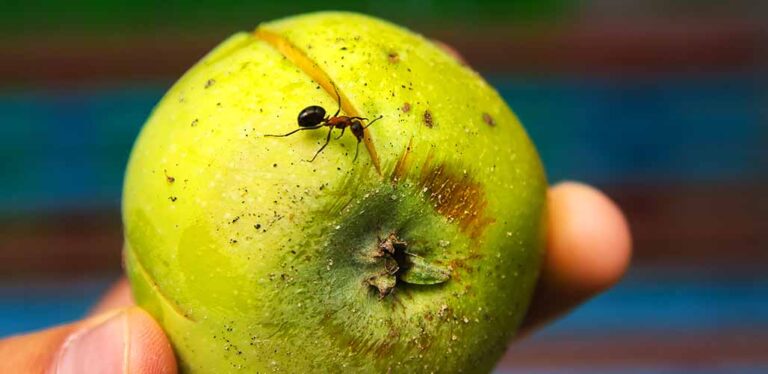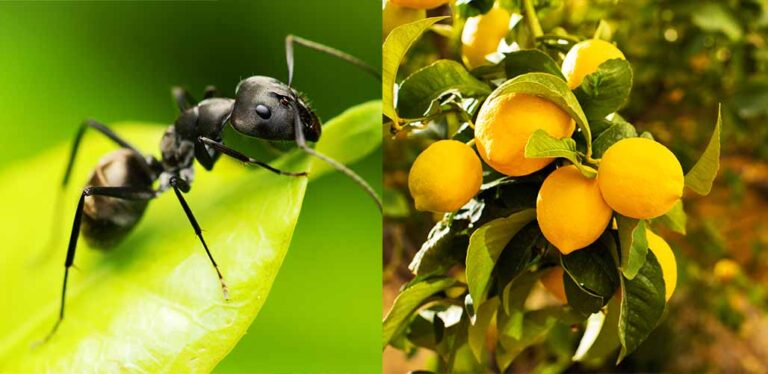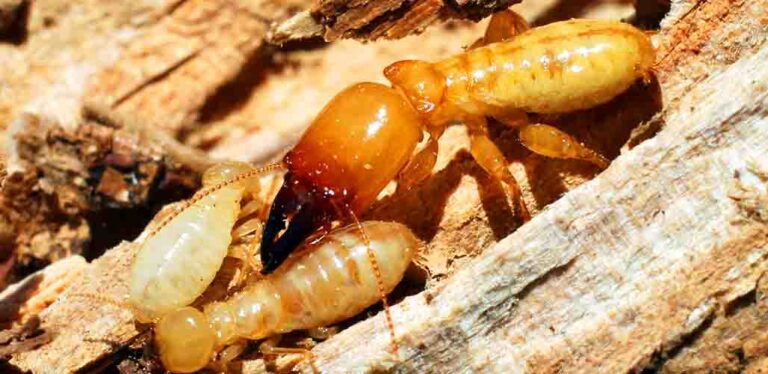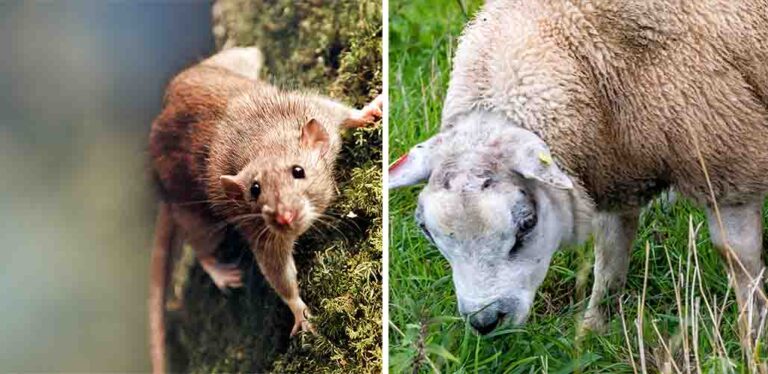Plants That Repel Earwigs
Plants that repel earwigs can be a great choice for eliminating unwanted pests. I always say, a well-maintained garden is a visual splendor. However, people who’ve never raised a lawn before don’t realize how complex it is to create one. Tilling the soil, burying seedlings, and watering them are the fundamentals. Getting to know the ground, the time of the year, weather forecasts, etc., are other things a gardener must be on top of. And then there is the impending threat from insects, pests, birds, rodents, and four-legged animals. One such pest that I find particularly pesky is the earwig. In today’s guide, I’ll explain exactly what these little insects are, why they can be a nuisance, and what you can do to avoid them in your garden.
Contents
- What are earwigs and what’s the problem with them?
- Identifying these bugs in your yard
- 6 plants that repel earwigs
- Using other bugs to control earwigs
- How to care for the plants you choose
- Other methods to consider
- Can these insects have any benefits?
What Are Earwigs?
Earwigs are common garden insects that devour leaves and flowers. They chew holes in berries, lettuce, and stone fruits. They particularly fancy flowers such as:
- Zinnias
- Dahlias
- Marigolds
- Hollyhock
- And butterfly bush.
Ornamentals plants lose their charm if earwigs are nearby. But, some plants can repel earwigs. These insects prey on insect larvae, aphids, and a few other pests too. They, however, don’t harm humans or sting, pinch, or spit venom.
What Do Earwigs Look Like?
Earwigs are fast-moving insects with rear-positioned pinchers and long, slender antennae. Their reddish-brown torso is flat and rigid. Male earwig’s forceps (pinchers) are prominent and curved. But, female’s pinchers are petite and straighter. The forceps help these bugs during procreation and when fending off predators. Their distinct appearance and relatively larger size means most people can recognize them quite easily.
Besides being a garden nuisance, earwigs can be a bother in other places too—such as within and around homes. They barely fly. During the day, they usually hide in cracks, crevices, and other cool, moist spots safeguarded from the sun to steer clear of predators.
These insects produce quinone, a smelly defensive chemical, to protect themselves from predators. At dusk, the pest comes out to hunt and feed. A buildup of earwigs inside your home means easy access to the backyard. If you’ve noticed them inside your home or in your yard, you’ll need to take steps to get rid of them. Luckily, this can be as simple as planting some new plants!

6 Plants That Repel Earwigs
Not all plants fall prey to these frustrating pests. Quite a handful of them put up a fight. Here are some plants I would recommend adding to your garden if you’re trying to get rid of these insects.
1. Bay Tree
Bay tree (Laurus nobilis) leaves act as earwig deterrents. The oil and eugenol-containing bay tree leaves emit a particular smell that keeps earwigs at bay. These leaves are also not ingestion-friendly or foliage that these annoying bugs can feast on.
Bay trees can be grown indoors or outdoors, so they can also help to dissuade earwigs from within the house. But, you should bear in mind that this plant adapts itself to its environment. It can grow up to 50 feet or more when positioned in the open. Indoor bay trees can easily attain a height of six feet.
2. Garlic
The pungent smell of garlic (Allium sativum) is unsurprisingly earwig-repelling. Many gardeners bothered by this pesky insect will plant garlic in specific spots in their garden that earwigs frequent. You can also use garlic cloves to deter earwigs. Follow these steps:
- Grab a couple of fresh cloves
- Crush them to release the strong odor
- Put the crumpled cloves in a spray bottle with water
- Spray the mix around your garden where bugs are prevalent
- Repeat spraying every few days to keep earwigs away
The easiest way to use garlic is planting a clove or two in containers of plants vulnerable to earwigs.
3. Onions
If the discussion is “pungency,” you cannot not talk about onions (Allium cepa). They belong to the same family as garlic and emit a similar waft of zest. You may use onion plants with or without garlic.
To dissuade earwigs, plant onions near susceptible plants. Or slice onions and strategically lay the pieces around plants. If your garden has a large population of these pests, you’d need a lot more onions. But, this may not be ideal considering the vegetable’s unpleasant, overpowering scent.
4. Sweet Alyssum
Sweet alyssum (Lobularia maritima) is a short-lived (or annual) flowering perennial that attracts tachinids, the nemesis of earwigs! The nectar the sweet alyssum produces attracts the fly. And, it’s not just tachinids. The alyssum plant attracts a few other earwig foes, including lacewings, parasitic wasps, and syrphid flies. By the way, the hoverflies and ladybugs the plant attracts feed on aphids and other pests, so this is a great option if you’re suffering from multiple pests.
5. Fennel
Fennel (Foeniculum vulgare) has a distinct smell that may deter earwigs. The complex insecticidal compound that fennel produces isn’t the most effective at repelling earwigs. However, fennels attract tachinid flies, just like the option above. Fennels are perennials that grow up to six feet tall and three feet wide. Besides tachinids, fennels also attract butterflies. Although butterflies do not ward off earwigs, their presence makes any garden more vibrant!
6. Dill
Dill (Anethum graveolens) is another herb that attracts anti-earwig bugs, such as tachinids, to a garden. It also pulls in several other beneficial insects and pollinators. Dill looks very similar to fennel. But upon close inspection, you’ll learn that dill leaves are shorter. Their taste is distinct too. The herb can grow up to five feet tall and three feet wide and has a solid fragrance. Its leaves and seeds can be used as a seasoning. Dill flowers are also edible.
How Do Tachinids Eliminate Earwigs?
I’ve mentioned tachinids quite a bit by now, so let’s take a closer look at how these flies can combat your infestation. Tachinidae are very methodical in the way they battle earwigs. And depending on the species, the mode of attack can differ.
The most common technique entails the female tachinid laying eggs on an earwig. The eggs glue onto the insect. And when they hatch, the larvae or the immature tachinid flies lair into the earwig and consume the pest’s innards, eventually killing the pest. Over time, the larvae mature and turn into full-grown flies outside or within the prey’s body. This feeding and metamorphosing phase usually takes weeks.
A few other tachinid fly species could lay tiny eggs on plant leaves as traps. When earwigs consume the eggs, hatching occurs within the pests’ bellies. Some tachinid fly eggs hatch quickly or even prior to being laid. Besides earwigs, tachinid flies parasitize several other insects, such as cabbage worms, gypsy moths, armyworms, Japanese beetles, codling moths, sawflies, tent caterpillars, squash bugs, leafrollers, etc.
Earwig-Repelling Plants Need Care Too
Although the above plants are excellent at repelling earwigs, they have their growth and maintenance requirements too. You cannot just plant and forget, hoping the plants will take care of themselves and repulse earwigs.
If you’re using them as ammunition to eliminate earwigs in your garden, care for them and safeguard them from potential diseases and pest attacks. Sweet alyssum struggles in a low-moisture environment. Choosing the right planting environment is, therefore, critical. Some plants, like fennel, grow aggressively and require timely pruning. Once you’ve chosen the best plant for you, you should research its specific care needs.
Other Measures to Steer Clear of Earwigs
Positioning the above plants in your garden will most certainly help deter earwigs. But if you want another layer of protection for easy-prey plants, here are a few other things you could do.
Keep Your Garden Dry and Tidy
Since earwigs enjoy moist areas, keep your place clean and dry. Remove all mulch and garden debris, particularly around your house’s base. Discard all damaged vegetables and fruits, as earwigs love hiding in and consuming them. Use dry gravel around your home instead. You can also physically remove the pest through easy-to-make traps.
Use Paper and Soap Water
Use a newspaper or magazine, roll it up, secure the cylindrical shape with tape, and place it near the affected plants. The rolled-up paper serves as a hiding place for earwigs and will attract the pest.
Visit the spot when dark or when it’s not bright yet for the earwigs to move out of the paper tunnel. Once you notice earwigs taking refuge, slowly pick up the rolled paper and transfer the pests into a soap-water-filled bucket. The water will suffocate them and eventually cause them to die. Also, the water’s soapiness will render it difficult for the earwigs to fly away or crawl. Use multiple paper rolls if needed.
Use a Desiccant
Sprinkle diatomaceous earth (DE) around the base or beds of the vulnerable plants and places where earwigs like to hide. Diatomaceous earth is a sedimentary rock used for its pest control traits. Besides earwigs, it also helps manage the proliferation of ants, bedbugs, etc., in a given space. The fine powder works as a desiccant, soaking up an insect’s exoskeleton’s waxy protective cover, causing it to dry and die.
Set Up a Pungent Oil Bed
Grab a lid, pour some vegetable or fish oil, and bury it with the oil near the affected plants at the surface level. Throw a lemon slice into the oil or soy sauce for added zing. When earwigs approach the plants, the oil pool will pull them instead. Once they dig in, they’ll be trapped. To prevent uninvited guests, cover the oil bed with some plastic cover and needle the protection layer so that the earwigs can access the oil trap.
Confirm the Earwig Situation
Before springing into action, ensure earwigs are truly upending your garden. Adding the plants mentioned above to your garden takes time and effort. If the sole intention behind including them in your backyard is to keep earwigs at bay, you’d be disappointed to later learn that your backyard never had an earwig problem. Luckily, since earwigs are not tiny beings, discovering them shouldn’t be difficult.
These insects are nocturnal, so look for them in the evenings. Grab a torch and shine the light at plants suspected to be at the pest’s mercy. Earwigs don’t like light and will move to escape, making it even easier to detect them. But they can move relatively quickly, so be fast to act. Grab them with tweezers or your bare hands if you don’t mind the mild pinching sensations. If you do, put on a thin glove.
Earwigs are Not Completely Harmful
These insects are not total demons. There’s a good side to them too, so you don’t need to find plants that repel earwigs if you only have a few in your garden. They help with compost piles and assume predatory avatars against mites, aphids, caterpillars, gross-looking nematodes (worms), etc., that can damage foliage. By eliminating them, earwigs help maintain a garden’s ecosystem and lessen the need for pesticides.
These creepy crawlies also scavenge plant debris and dead bugs. So, if you only have a handful of earwigs scattered in your garden, I’d recommend you let them be. Resort to the above measures only if the pests are in abundance and causing harm to your garden.
Choosing Plants That Repel Earwigs – A Summary
There’s a lot of thought that needs to go into your garden. The plants you choose aren’t just good for a beautiful view – they can actually help you keep your outdoor space free of pests like earwigs. Smelly plants like garlic and onion will repel these insects. Or, you can opt for plants that attract natural predators of earwigs! And, if these don’t work, you can try some of the other methods I’ve mentioned above to control your pest population. Let me know which one you opted for in the comments!







